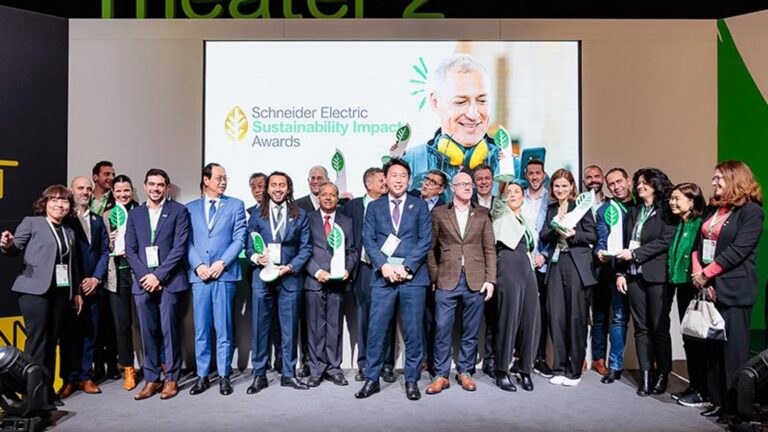Saturday, July 5, 2025
By Richard Carlson
Canada’s climate goals to reach net-zero GHG emissions by 2050 requires a clear transition plan. Government and industry stakeholders have started to create frameworks for how we can achieve this as a country, but there’s still much work to be done to plan and execute our transition properly.
Energy production and consumption are responsible for approximately 80 per cent of Canada’s total emissions, offering a major opportunity for reduction if we can find ways to manage supply and demand, as well as energy and fuel options accordingly. While estimates indicate that end-use energy demand—that is, the consumption of energy to power and heat our homes, run our businesses and transport both people and goods from A to B—will increase in the next few years, it is projected to ultimately decline by 22 per cent between 2021-2050. The rationale behind this projection is the overarching plan to transition to different technologies and fuels, make energy use more efficient, and lower levels of use in some sectors. In particular, switching from fossil fuels to electricity can reduce overall energy demand significantly because electric devices often use energy more efficiently.
In order to achieve net-zero and even potentially negative-emission energy systems through electrification, we anticipate a big focus in 2024 on integrated energy planning by all levels of government. A holistic approach to energy use will likely be critical as we pursue the electrification of as many things as possible—from heating and cooling systems in homes and offices, to EVs or alternative fuel options for both personal and heavy transport.
For example, Canada’s mandate for all new car sales to be electric by 2035 is fantastic news for emission reduction, but with more electric cars on the road, electric vehicle (EV) charging will greatly affect demand for electricity, creating a new conundrum for electric utilities in how they produce and distribute electricity across the country. Pollution Probe’s 2023 EV Charging Survey shares the successes and recommendations related to charging infrastructure across Canada, pointing to the need for clear planning and increased accessibility to electricity as we continue to encourage EV adoption.
Currently, Canada’s energy systems are treated in isolation: electric utilities consider and plan electricity; gas utilities manage our natural gas system (which is how most Canadians heat their homes); and gasoline or diesel management for transportation are generally left to the competitive market. Regulators consider electric and gas utilities in isolation. Planning for all three energy systems is done separately, meaning the impacts of a change in one of them is not considered by others. Even energy efficiency programs are siloed, with gas programs generally only focused on how to reduce gas usage, versus energy use and efficiency as a whole.

This process has been sufficient in managing Canada’s energy use and efficiency to date, but limited reduction in emissions—and even multiple increases in emissions since Canada’s signing of the Paris Agreement in 2014—point to a larger issue that can only be solved through integrated energy planning.
We foresee a rise in consideration of integrating energy systems in the planning and in development of policies as Canada continues its transition to net-zero. Energy efficiency policies need to consider the most cost-effective and cleanest way to provide the energy needed. For example, the decarbonization of residential heating in Canada will present major challenges, given the deeply embedded natural gas infrastructures and incumbent actors, extremely cold winter temperatures seen in many parts of the country, and the need to maintain accessibility, affordability and reliability of heating services. This could mean a shift from using natural gas to electrification or hybrid heating systems, where a heat pump is paired with a natural gas boiler. In Canada’s cold climates, this hybrid approach could ensure reliability of service, but changes in demand for both fuel systems and new infrastructure required to access them can only be facilitated seamlessly when planning the energy system holistically.
See also Market report on the balance between securing affordable energy and fighting climate change
Ontario’s Electrification and Energy Transition Panel report recognizes the need for integrated energy planning, outlining a strategic roadmap that considers the relationship between all sources of energy as Ontario transitions to a clean energy economy. The Panel specifically emphasizes the need for modifying the existing frameworks in order to facilitate cross-sector coordination, as well as collaboration and integration in energy planning across fuels, sectors and government levels.
One of the most important considerations, however, is the need to build and maintain public support for integrated energy planning by creating a transition plan that is seamless for consumers—one where energy remains affordable, accessible and with reliable service.
Changes in infrastructure and energy systems can take years to develop. From erecting new power lines or digging new pipelines, managing current demand while working towards reducing emissions will require careful consideration in order to avoid critical power issues—a black-out in the middle of winter due to mismanagement of energy demand and distribution is a great way to develop public mistrust of a transition to low-carbon systems that could work if executed properly.
We need to start planning now if Canada plans to meet its net-zero targets, and we need to consider how our energy needs for electricity, heating and transportation can be integrated together to maximize efficiency. Scaling up energy planning at a community level is a great place to start—bringing together how people live, move and work into one integrated plan ensures that all elements are considered. Plus, key learnings can then be shared with other communities, creating a collaborative approach to advancing the adoption of integrated energy planning across the country.

Richard Carlson is director of energy policy and energy exchange at Pollution Probe. He has 15 years of experience both professionally and academically in analyzing energy policies and politics in Canada, Europe, Central Asia and the Middle East. Carlson is a member of the Advisory Committee of the Positive Energy program at University of Ottawa, a member of the Research Advisory Committee of the Canadian Energy Research Institute (CERI), and was on the Conseil d’administration (board of directors) of Transition énergétique Québec (TEQ), the Quebec government’s energy transition agency.












